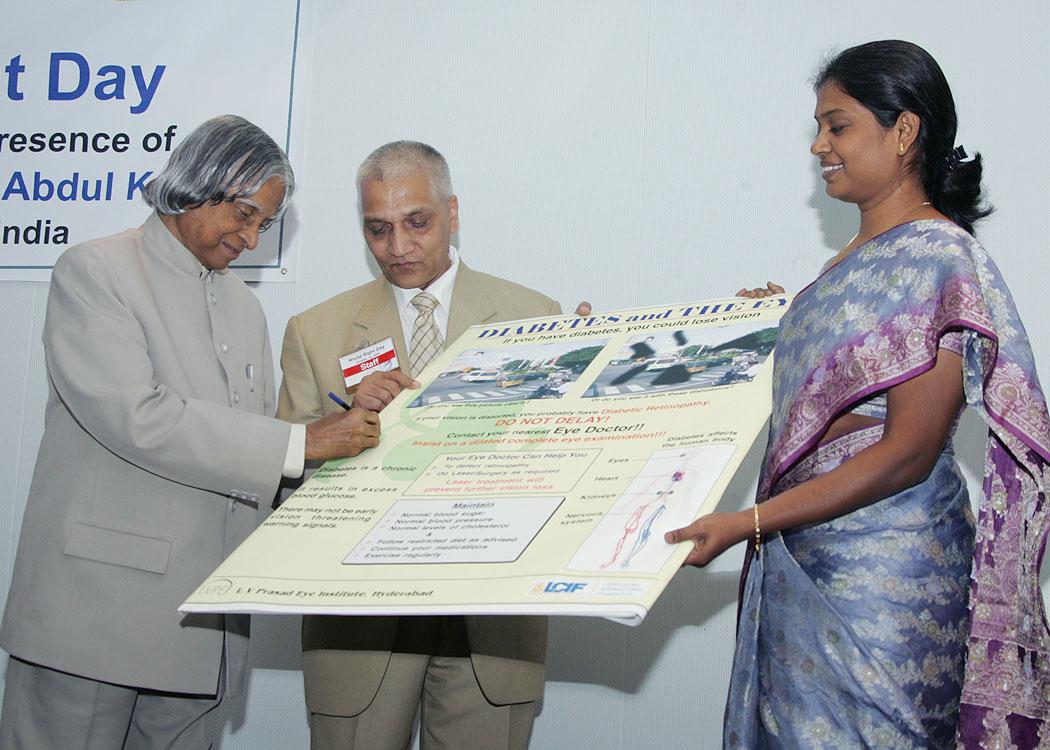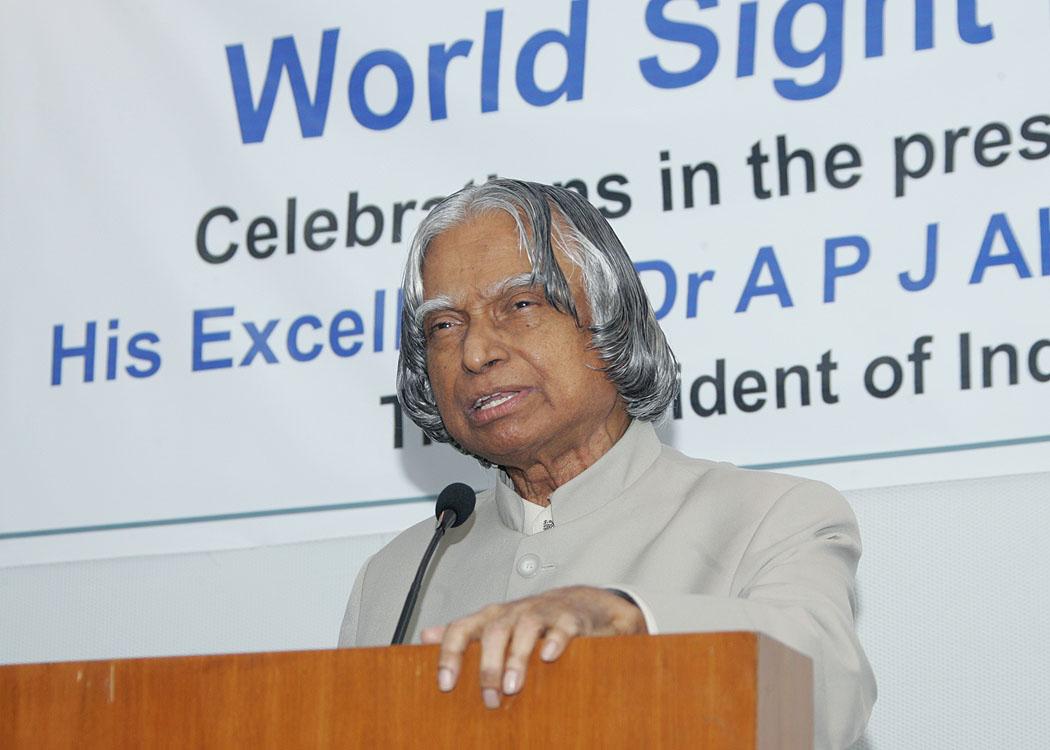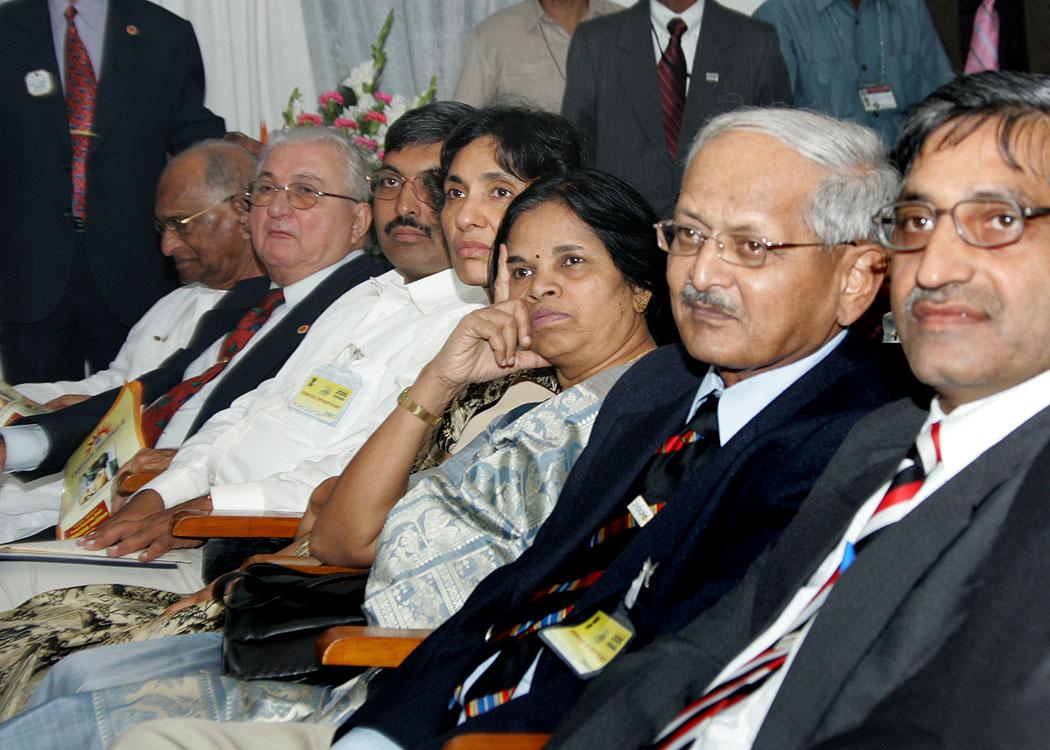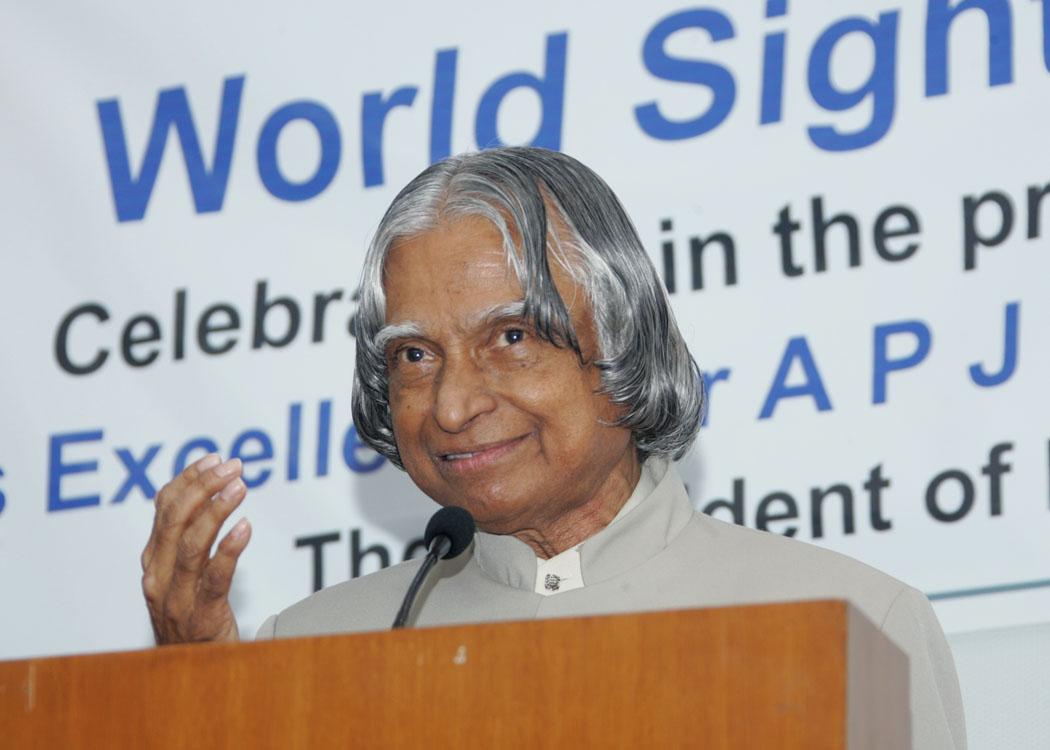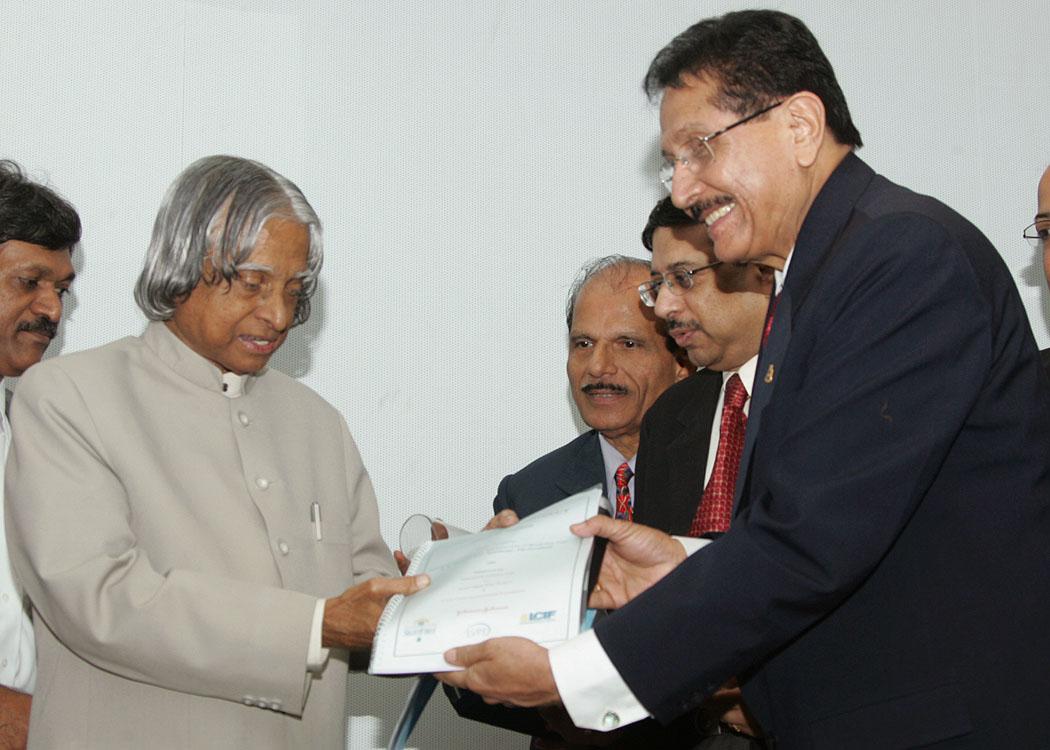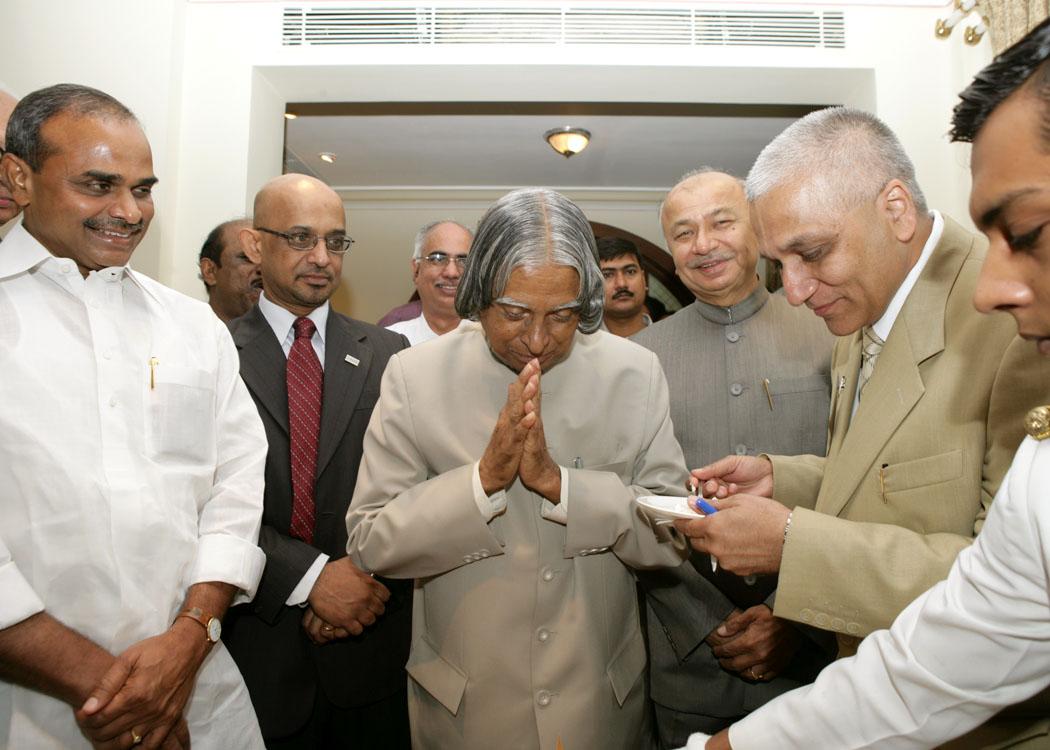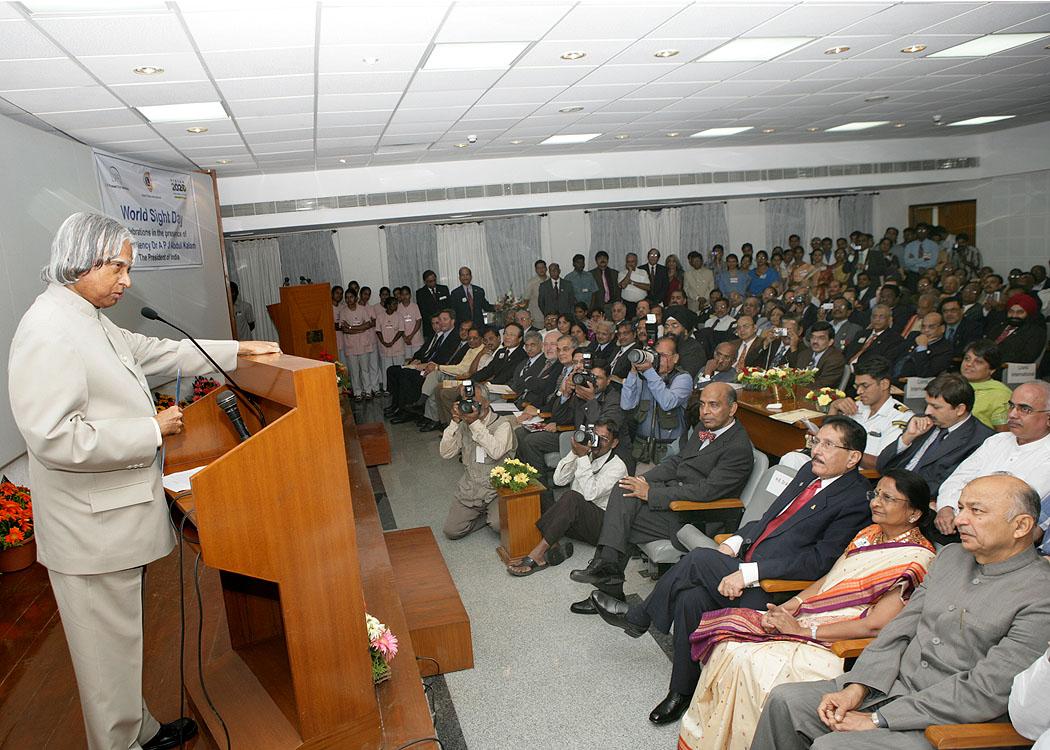Address At The Celebration Of The World Sight Day, Hyderabad
Hyderabad : 15-10-2005
Our Mission: Vision for All
I am delighted to participate in the World Sight Day organized by the "Vision 2020: The Right to Sight" and "Lions International" at Hyderabad. My greetings to the organizers, ophthalmologists, optometrists, medical social workers, medical technologists and distinguished guests. I am happy that four programmes one on "Andhra Pradesh Child Eye health initiative", "sight for kids", "Lions Diabetic Retinopathy" and "Sight First - II" are being launched by "Vision 2020:Right to Sight" in collaboration with Lions International. I would like to talk to you on the topic for Our Mission: Vision for all.
There is a continuous increase in the diabetes especially in the developing countries. An estimated 35 million people have diabetes in India. Urban India has almost four times the rates of diabetes in comparison with the rural India. Diabetic retinopathy is the most common ophthalmic complication of diabetics. The reported prevalence of diabetic retinopathy in India varies 20 to 30%. By these estimates, we may have around 5 to 6 million persons with diabetic retinopathy. Blindness from diabetic retinopathy is fast acquiring the proportion of a public health problem. This is the right time to launch the diabetic retinopathy programme to built capacity among our medical professionals to handle this disease with adequate professionalism. It is important that the LV Prasad Eye Institute, in partnership with 14 primary and secondary eye hospitals, is organizing training programmes for Ophthalmologists, Optometrists and medical social workers on different aspects of diabetic retinopathy, particularly screening of target patients at peripheral eye hospitals and diagnostic and treatment through tele-medicine system.
National Mission for sight
A national mission for protocol driven treatment has to be evolved involving mission-oriented doctors throughout the country. This team should organize series of eye camps, reinforcing many eye hospitals with technology to cover larger population for the treatment. In doing so, integration of minds is possible and governmental support can be made easier. India already has a national programme for control of blindness and also "Vision 2020: The Right to Sight Initiative". There is a universal sympathy to the visually impaired. This service oriented attitude drawing on the sympathy can bring together a number of partners in the national mission.
Tele-Ophthalmology
The International Association for Prevention of Blindness can create a tele-Ophthalmology network using tele-medicine network of ISRO. Once we have the connectivity, then there should be a universal tele-ophthalmology system in place, Ophthalmologic specialist can come together in virtual clinics. A multi eye clinic environment with seamless two-way interaction between the doctors and patients will enable the eye specialist to diagnose the particular patient and also seek expert opinion from distance doctors located in remote areas. Such sharing of knowledge will provide cost effective integrated treatment for the patients in the specialized areas like corneal blindness, surgical complications, posterior segment disorder & retinitis, etc. The same system can be can be transformed into a virtual ophthalmic institute from where a specialist lecture can not only reach any remote corner but also enable a good eye specialist in the remote area to share multicast information with others in the network. Thirdly the same system can be used to offer practical training to eye doctor on the intricacies of eye operation through a "Virtual Operation Theater". Such is the power of Tele-Ophthalmology. We have implemented a tele-medicine system in Rashtrapati Bhavan with CARE Hospital.
Need for indigenous medical devices & systems
You are aware that approximately twenty six percent of our population is still below the poverty line and medical care has to be provided to a large population. I was discussing this problem with some of my doctor friends and those connected with health care. I realized that the major problem in Indian health care delivery system including the area of ophthalmology is the near total dependency on medical imports of diagnostic and therapeutic equipment and devices including consumables. While the common man seldom buys anything imported, he is made to purchase or pay partly for the cost of the imported gadgets for healthcare. This clearly brings out that, we need to create an infrastructure capable to produce our own medical devices, consumables and equipment, based on the technology available and to be developed within the country, at affordable cost. Certain initiatives were taken in this direction but a commercially competitive effort leading to production and service network is yet to merge.
A consortium of ophthalmology institutions have to promote research and development of state-of-the-art ophthalmology equipments in collaboration with medical institutions and medical universities and industry.
Stem Cell: For Restoration of Vision
The recent identification and characterization of progenitors with stem cell properties has opened new avenues that may be useful for treating functional impairments caused by the death of specific cell population. Stromal and neuronal degeneration are the causes of debilitating visual impairment associated with many ocular diseases, such as degenerative diseases of cornea, retinitis pigmentosa (RP), age- related macular degeneration (AMD) and glaucoma. The stem cells may help restore vision in patient who has these diseases, by re-populating or rescuing the damaged ocular surface cells or retinal cells from further degeneration. The work done in the area by LV Prasad Eye Institute is pioneering and other eye institutes in the country can follow this model.
The stem cell research has tremendous potential for ophthalmology, I suggest the international association of Prevention of Blindness along with Lines club international can join together with other partners and promote a research programme in stem cell based on the experience of LV Prasad eye institute.
Ophthalmologists Network
The major eye care hospitals in the country namely, Arvind Eye Hospital, Madurai, Sankara Nethralaya, Chennai and LV Prasad Eye institute, Hyderabad, JPM Rotary Eye Hospital, Cuttack, Sri Satguru Seva Trust, Chitrakoot, Rajendra Prasad Eye Institute, New Delhi who are rendering excellent eye care service in different regions. It will be useful to network all these hospitals through a tele-education network and share the experience of specialists in various fields of ophthalmology. They can have periodic tele-meetings in which the special and unique experiences and the special strategies adopted by the doctors can be discussed. This will enable knowledge sharing and feasible solutions to certain special class of diseases, which are being seen for the first time in a particular region. Also, the network can be used to conduct research on special areas including stem cell research. There is a need of multiple institutions sharing high cost research facilities. Above all, ego barriers are toughest to overcome.
Research Area
Nano-technology is finding large-scale application in drug delivery system and biomedical application. The low dimensionality of many nano-structures, in which electrons are free to move in only two, one or near zero dimensions, has a profound effect on their chemical, electronic and optical properties.
Focal stimulation requires electrodes or groups of electrodes in the order of 100 nano meters or less with spacing of no more than 5 micron. Localized structures of this sort would stimulate the actions of rods and cones in the retina of the eye. This type of structure is fundamental to the possibility of developing an effective prosthesis device to restore vision in certain eye diseases.
All the major eye care centres in different parts of the country can jointly establish a Nano Technology Research Foundation in collaboration with international institutions for eye care and bio- medical applications.
Investment in eye care
The pyramid model of eye-care delivery as focused by Dr.G N Rao is an excellent roadmap. It involves creation of a four tier system of treatment namely primary, secondary, tertiary and advanced tertiary care. In India, we have 20% vision centres for primary care, 70% service centres for secondary care, 50% training centres for tertiary care and 25% centres of excellence. We need to double the investment to provide full compliment of eye care facility for all the four sectors with participating eye centres, government agencies and international partners. An integrated proposal based on the Eye Pyramid model can be prepared by the International Association for Prevention of Blindness India Chapter, Lions International and LV Prasad Eye Institute for submission to Ministry of Health, private sector industries, Lions Club organisations and Philanthropists for necessary funding.
Ophthalmologic communication
Recently, there was a meeting of cured patients, their doctors and a few social workers. One important point emerged during the interaction was that the relationship between the patient and doctor extends to patients' family. This in turn, transmits effective messages from one family to another family on advice to prevent the eye diseases, necessity of periodic checks, the dietary habits and the need for life style changes including eye exercise for good eye health. Actually, I believe this good contact between the doctor and patients is comparable to that of a teacher and student. I request every doctor to play the role of a teacher in advising every family on eye disease prevention and methods to lead a healthy life. I hope you will find time for this noble action.
Conclusion
'Defect free vision for all' should be our national mission. The eye problems of the children can be corrected, if diagnosed early. Such programmes should aim at screening all the children. I am glad that today we are launching "sight for kids" as part of the "Vision 2020:Right to Sight programme". Teams of paramedical personnel can visit nearby schools and villages and examine children for possible vision defects. Any one having defective vision or any obvious complaints should be sent to the nearest centre for further investigation and treatment. I have been asking the students to be helpful to their colleagues by bringing out special eye problem of the child to the notice of the parents or the teachers.
We need a very good ophthalmologic centre in the North eastern states. The International Agency for Prevention of Blindess in association with Lions Club International can evolve a proposal for creation of a state-of-the-art Ophthalmologic Institute for submission to the North Eastern Council for consideration.
We have the best of doctors and technologists in India. We have core competence in design and software engineering. Emerging technologies in virtual reality and micro machines will transform the healthcare scenario. This transformation should lead to helping the people who cannot afford the modern medical care. To improve the availability of eye care facility to the rural masses, I recommend deployment of mobile eye clinics by all the eye care centres. I am happy to note that the estimated number of blind people in India during the last decade has come down from nine million in 1990 to 6.7 million in 2002. We have to aim that in the coming decade it should come down to less than 4 million. One of the great qualities of human being as envisioned by Almighty is to give and give. What any one of us can give who is blessed with eye vision. When I see you all, members of International Association of Prevention of Blindness, members of Lions Club International and other agencies, professionals of LV Prasad Eye Institute, Ophthalmologists and medical technologists, I find God has blessed you all to give the Vision for thousands and thousands of our fellow citizens. In this direction anything is needed I can certainly assist.
I am sure that the partnership of ophthalmologists, vision scientists and medical social workers will lead to high quality eye care which will enable India to succeed in the mission of "Vision for All".
May God Bless you.

